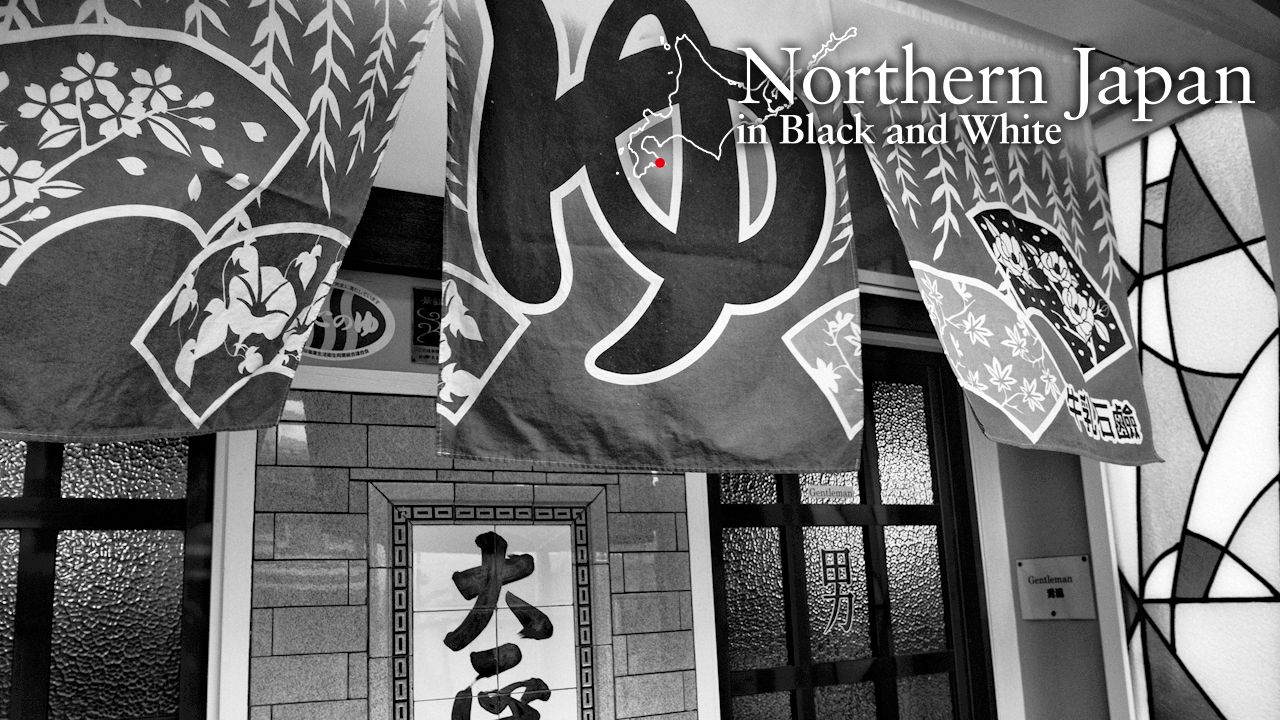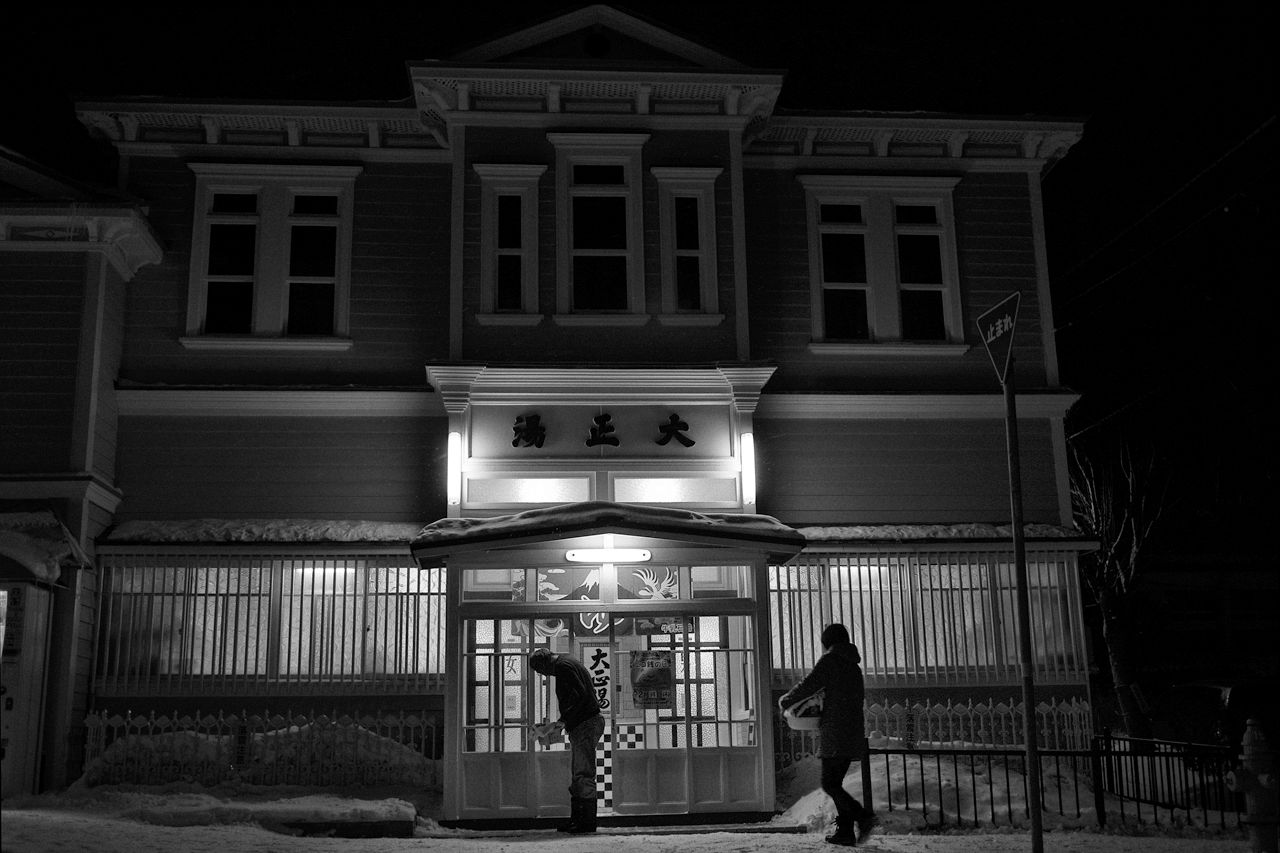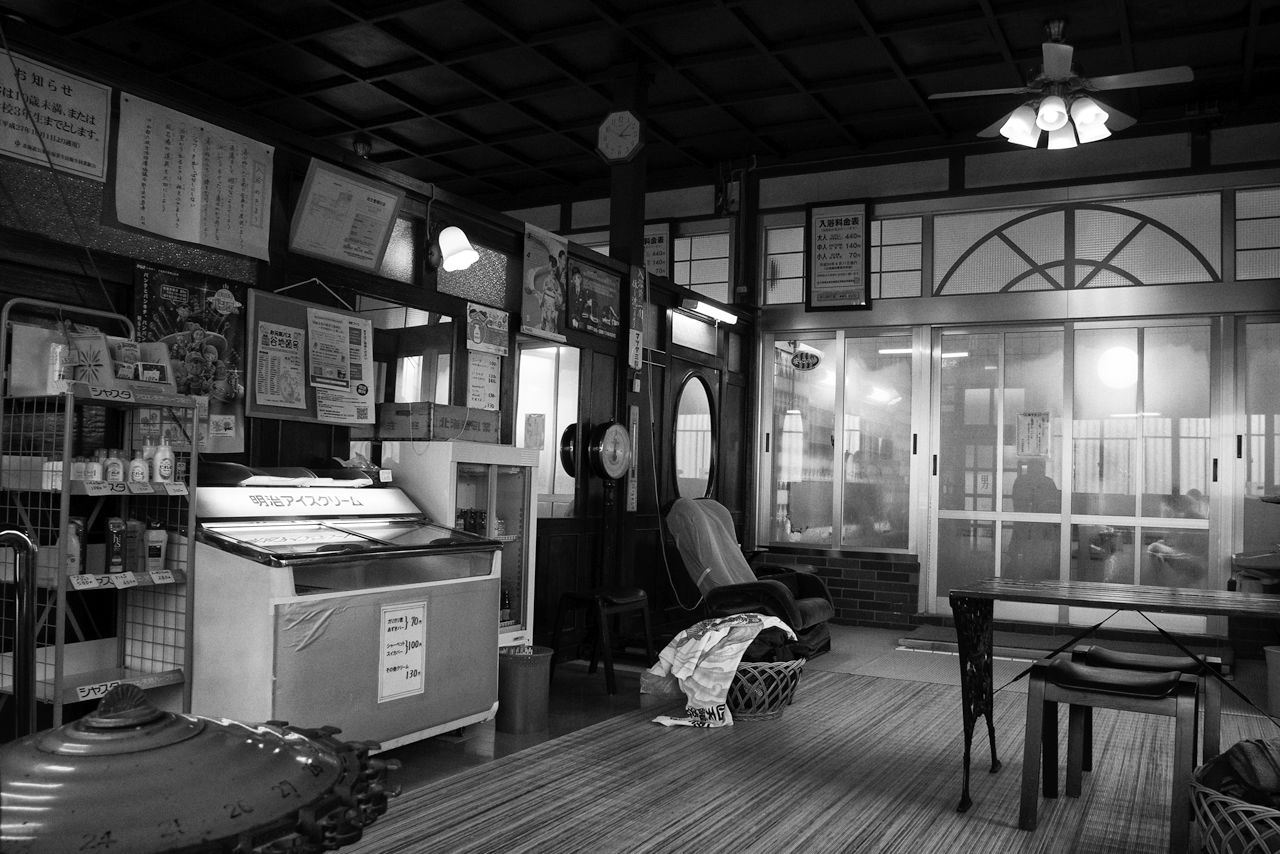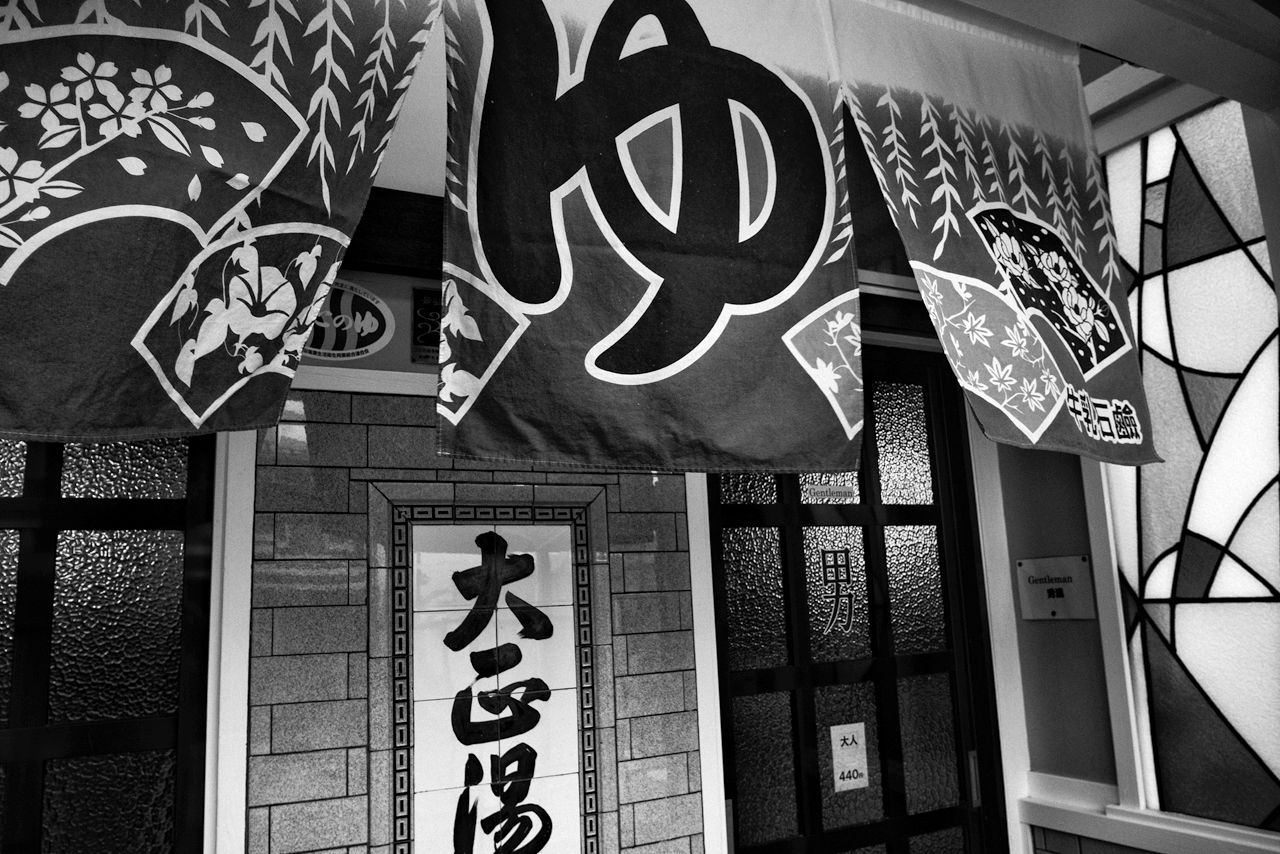
A Hot Bath at the Taishō-yu
Guideto Japan
Travel- English
- 日本語
- 简体字
- 繁體字
- Français
- Español
- العربية
- Русский
A young couple in jeans climbs the slope, looking up at the two-story Taishō-yu bathhouse. The Western-style building, its wooden walls painted pink, was constructed more than a century ago in 1914—third year of the Taishō era, lending the establishment its name. After some hesitation, the pair part the noren, traditional curtains hung out to show the bath is open for business, and step inside.

Visiting Taishō-yu when the weather is -10°C. (2019)
Speaking to the current manager, Kotake Noriko, I learn that the Taishō-yu was established by her grandfather. He was a shipwright who did repairs in the north-sea fisheries. Deciding that he had had enough of being rocked by the waves, he found an old bathhouse and went into a new line of work. At the beginning of the Shōwa period (1926–1989), he rebuilt the Taishō-yu completely, incorporating design elements from the Russian buildings he had seen in Kamchatka. Hakodate is famous for its fires, but somehow the Taishō-yu escaped both these and the wartime conflagrations to become a neighborhood institution offering the kind of retro East-West fusion Hakodate is famous for. Even in the dead of winter when the mercury drops well below zero, locals come here for their baths.
When I enrolled at university in Tokyo, still sporting my high-school buzz cut, I boarded at a house in Yūtenji, three stops from Shibuya on the Tōyoko line. I soon grew addicted to the sense of freedom that came from skipping my afternoon lectures and taking a soak in the bathhouse by the station. The painting of Mount Fuji on the wall fascinated me—I had never seen this back in Hakodate. As I lounged in the hot water, I would watch the light filtering through the high steam windows. Now that was a daytime bath. The image of the frowning face of my German professor evaporated as easily as the grammar he tried to teach me. A release of the spirit, perhaps? After my bath, I browsed used book stores and visited the ramen shop next door for a beer and a bowl of wonton noodles.
Inside the Taishō-yu, too, the décor practically overflows with retro flavor. It is the Taishō and Shōwa eras, just as they were. Fixtures like the attendant’s desk and the screen separating the men’s and women’s baths all seem designed to evoke nostalgia. The huge cane baskets for storing clothing, the shoe boxes, the tin umbrella stand . . . As I sit in the water staring up at the sun spilling in through the steam windows, my mind begins to drift. And then I hear laughter from the women’s bath. Oh, that’s right—the bathhouse is for socializing, too.
The ramen restaurant of my youth, along with its wonton noodles, might not be waiting after my bath, but some handmade Aizu flour noodles at Sobakura are sure to bring happiness.

The changing room and bath area are charmingly retro.
Taishō-yu bathhouse
Access: Five minutes’ walk from the Hakodate-dokku-mae stop on the Hakodate City Tram.
(Originally published in Japanese.)
tourism Hokkaidō Hakodate photography Northern Japan in Black and White
